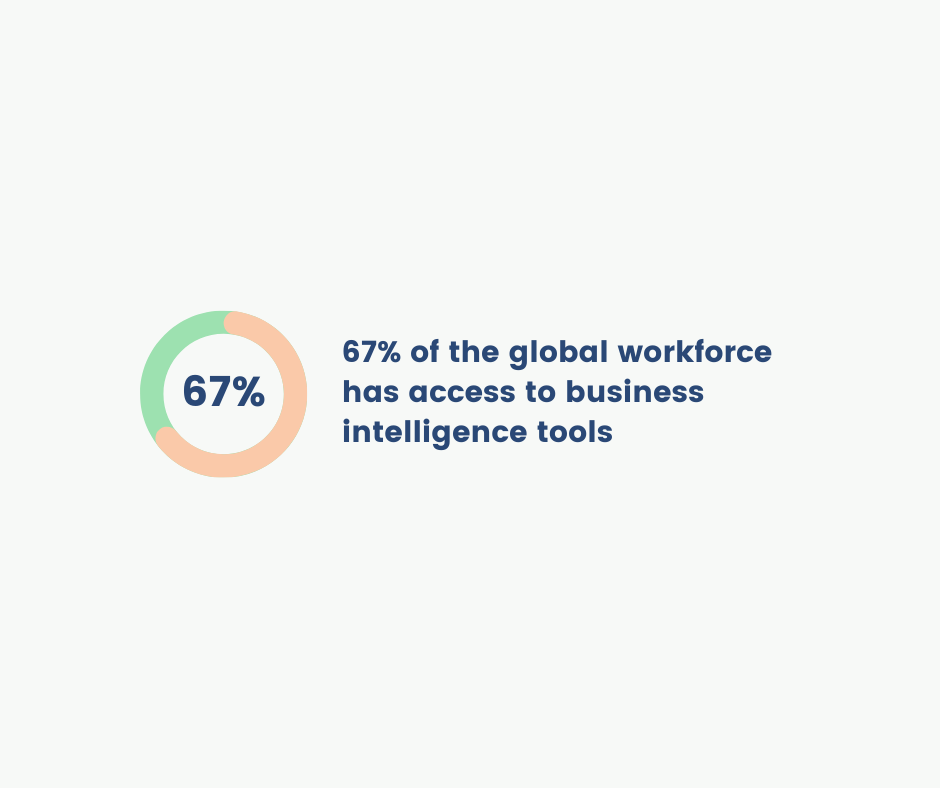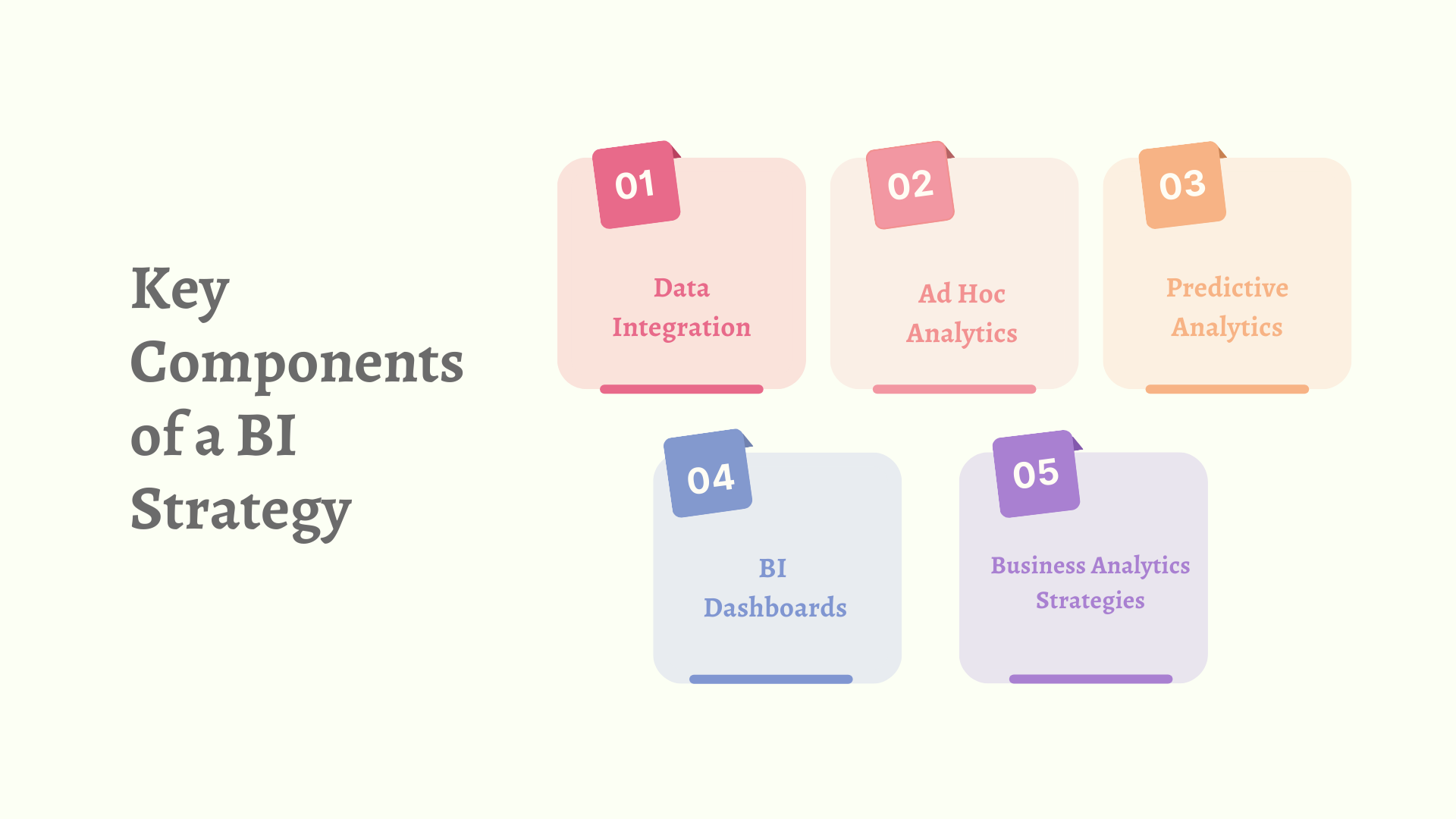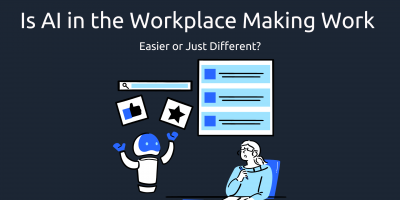
Free Payroll Software for Small Business
Learn more about the free payroll tools small business owners can use to save hours and grow their business.

Collecting and analyzing data from various sources is essential for companies as it will contribute to achieving their business goals. Therefore, companies are turning to business intelligence (BI) solutions to address operations and support growth objectives adequately.
To better understand BI solutions, we will answer the most important questions regarding business intelligence and what it represents.
Before looking into BI solutions, we must answer what business intelligence is.
BI is the process of collecting, analyzing, and storing data in a company to make effective business decisions. BI covers many technologies and methods, from how data is organized, analyzed, and kept to how the findings are reported.
When implementing an effective business intelligence solution, a company must know what BI tools are.
Business Intelligence tools are both proprietary and open-source software applications. They gather, process, analyze, organize, filter, and report extensive data from internal and external systems. The goal is to convert raw data into valuable insights for business-related objectives.
BI tools can be immersed into applications and processes to support data analysis within one workspace without switching between separate systems.

The first mention of Business Intelligence was in 1865 by Richard Millar Devens, when he presented the phrase “Business Intelligence” (BI) in the “Cyclopædia of Commercial and Business Anecdotes.” He used it to describe how Sir Henry Furnese, a banker, profited from data collecting and analysis by acting on it before his competition.
Then, in 1958, an IBM computer scientist named Hans Peter Luhn wrote an article describing the potential of gathering BI through technology. His research helped establish methods for creating some of IBM’s early analytics platforms.
In 1968, only individuals with highly specialized skills could translate data into usable information. A computer scientist and mathematician, Edgar Codd, noticed the challenge of storing data from multiple sources in siloes. He published a paper in 1970 and altered how people thought about databases. He proposed developing a relational database model, which became increasingly popular and quickly adopted worldwide.
A relational database organizes data into rows and columns, forming a table collectively. The decision support system (DSS) was the first database management system to be developed. The DSS assists an organization’s mid- and high-level management by analyzing huge volumes of unstructured data and accumulating information that can help solve problems and affect decision-making.
The number of business intelligence vendors grew in the 1980s as organizations discovered the value of using data to make better decisions. Additionally, more tools were developed during this time to access and organize data in simpler ways. Enhance your understanding of business intelligence with courses in data analysis for beginners. These courses provide insights on how to leverage data using techniques like exploratory data analysis (EDA) and visualization, essential for effective BI implementation. OLAP, executive information systems, and data warehouses were some of the tools designed to work with DSS.
According to a MarketandMarkets report, the global BI market is expected to grow from 23.1 billion dollars in 2020 to 33.3 billion in 2025.
In addition, as stated by Accenture, 67% of the global workforce has access to business intelligence tools. But why do companies turn to data to reach their business goals?
Data accessibility drives informed decision-making, fostering a more comprehensive understanding of business functions. Additionally, business intelligence (BI) tools facilitate extracting more profound insights, ultimately enhancing decision-making processes for strategies and operations.
BI solutions offer real-time reports to managers on demand from any location, thereby minimizing the potential for errors by delivering precise data for improved decision-making and future forecasting. Thus, it’s essential to implement an effective business intelligence solution.
BI tools primarily benefit a company’s operational insights and planning activities by aggregating and visualizing key data from across the business.
Here are some of the benefits that come from implementing BI solutions:
Finding the right BI software to match the company’s specific needs can be tricky as there is an increasing number of solutions available in the market. Comparing the features of different tools and determining which ones solve the current data analytics issues is one way to find the right solution.
The actual cost of acquiring a solution isn’t just the purchase price.
There are other factors related to implementation, such as training and scaling. While cost is one of the biggest implementation challenges, the right solution can yield a significant return on investment (ROI) worth the initial cost.
This comes in the form of:
A lack of technical skills can affect the implementation of business intelligence software, making it harder to get buy-ins and preventing the system from functioning to its total capacity. Therefore, it’s essential to anticipate how much training will be needed in the early stages of the implementation.
Selecting the right Key Performance Indicators (KPIs) for the company’s BI solutions is crucial to measuring the most relevant metrics that align with the organization’s goals and objectives. Select KPIs that engage stakeholders and ensure data accuracy for effective business intelligence.
When selecting KPIs, it’s essential to follow a structured approach. Begin by identifying the overarching business goals that the KPIs should support. Involve key stakeholders to gather their insights on metrics most crucial for measuring progress. Compare these chosen KPIs with industry benchmarks to ensure they align with broader standards.
Tailor KPIs to the specific needs of different departments or areas within the organization. Opt for easily measurable and actionable KPIs and prioritize the selected KPIs based on their importance to the business objectives. Establish clear targets for each KPI to provide a tangible goal for performance evaluation.
It’s vital to regularly review and adjust the chosen KPIs to ensure they remain relevant and aligned with evolving business priorities.
Additionally, ensure that your Business Intelligence (BI) system can effectively handle and analyze the selected KPIs. Provide adequate training and education to users on effectively interpreting and leveraging these metrics.
Finally, focus on data quality to ensure the accuracy and reliability of the KPI measurements.
Business intelligence solutions can be very technically focused, making it hard to understand and deploy successfully. Sometimes, only IT staff or analysts can navigate the information stored in data warehouses and use complex BI tools to extract the key insights.
BI software may never reach its full potential without the correct access to the employees who best utilize these insights and drive positive outcomes.

The business intelligence strategy needs to be aligned with the company’s goals. Аn organization should follow a few steps to make the BI strategy more effective.
A company should start by understanding its current situation. Analyzing data sources to set objectives and priorities is crucial to align business intelligence with the company’s goals.
A business intelligence team is essential for data analysis and connecting with end-users. The roles of the BI team include:
Choosing data architecture is based on the company’s needs. There are four stages of data sophistication:
Different BI architecture approaches have specific capabilities. A company can select one-tier, two-tier, and three-tier architecture:
Top players on the market provide a wide range of functions in their BI tools, such as Oracle, Tableau, IBM, and Looker. However, a company has first to assess its specific business requirements.
Ready-made solutions are limited in solving unique problems. At the same time, they can offer too many features that likely the company wouldn’t use at all. Custom software development can be a win-win option when an organization is looking for an adaptable solution that specifically answers its needs.
There are deployment options available, like on-premises, cloud, and hybrid.
Platforms like Microsoft Azure, AWS, Google Cloud, and IBM Bluemix are leaders in the cloud environment.
Creating a visual roadmap with planned activities, dates, KPIs, deliverables, and milestones is essential for organizing the time frames for each task. The company needs to make sure it’s technical but also engaging for end-users.
A business intelligence strategy typically consists of several key components essential for effective implementation and success.
These components include:

The field of business intelligence solutions is evolving rapidly and holds exciting and promising future trends. Here are some of the most notable developments shaping the future of BI.
Incorporating AI and machine learning into business intelligence is a significant trend. AI and ML algorithms excel at analyzing vast datasets and uncover patterns that may evade traditional BI methods. This enables organizations to gain insights into customer behavior, optimize operations, and foster innovation.
Collaborative BI involves sharing data and insights across different organizational departments and teams. It facilitates informed decision-making at all levels, fostering transparency, accountability, and cross-functional cooperation.
Augmented analytics integrates AI and machine learning into business intelligent tools to automate data preparation, analysis, and visualization. This accelerates and enhances the accuracy of insights, even for users without extensive tech knowledge.
Another influential trend in the future of BI is voice-activated BI. It employs natural language processing (NLP) and voice recognition technology to allow users to ask questions and analyze data through voice commands.
Technology’s fast growth in assessing and using data allows organizations to leverage the power of data analytics and, thus, make more informed decisions, optimize processes, and gain a competitive edge.
BI tools’ insights not only enhance strategic planning but also pave the way for organizational growth and innovation. Hence, adopting BI solutions becomes crucial for staying competitive and ensuring long-term success in the dynamic corporate environment.
Browse our curated list of vendors to find the best solution for your needs.
Subscribe to our newsletter for the latest trends, expert tips, and workplace insights!

Learn more about the free payroll tools small business owners can use to save hours and grow their business.

“What gets measured gets managed” is a familiar business principle. When it comes to pay equity, however, most companies still fall short.

Great leaders don’t just ask, “Why are people leaving? But rather, “What must we change to make them stay?”

With the rise of AI in the workplace, its impact has become multi-dimensional. While there is no doubt about its ability to reduce manual labor, this technology also reshapes job expectations, creating new opportunities and challenges.
Used by most of the top employee benefits consultants in the US, Shortlister is where you can find, research and select HR and benefits vendors for your clients.
Shortlister helps you reach your ideal prospects. Claim your free account to control your message and receive employer, consultant and health plan leads.